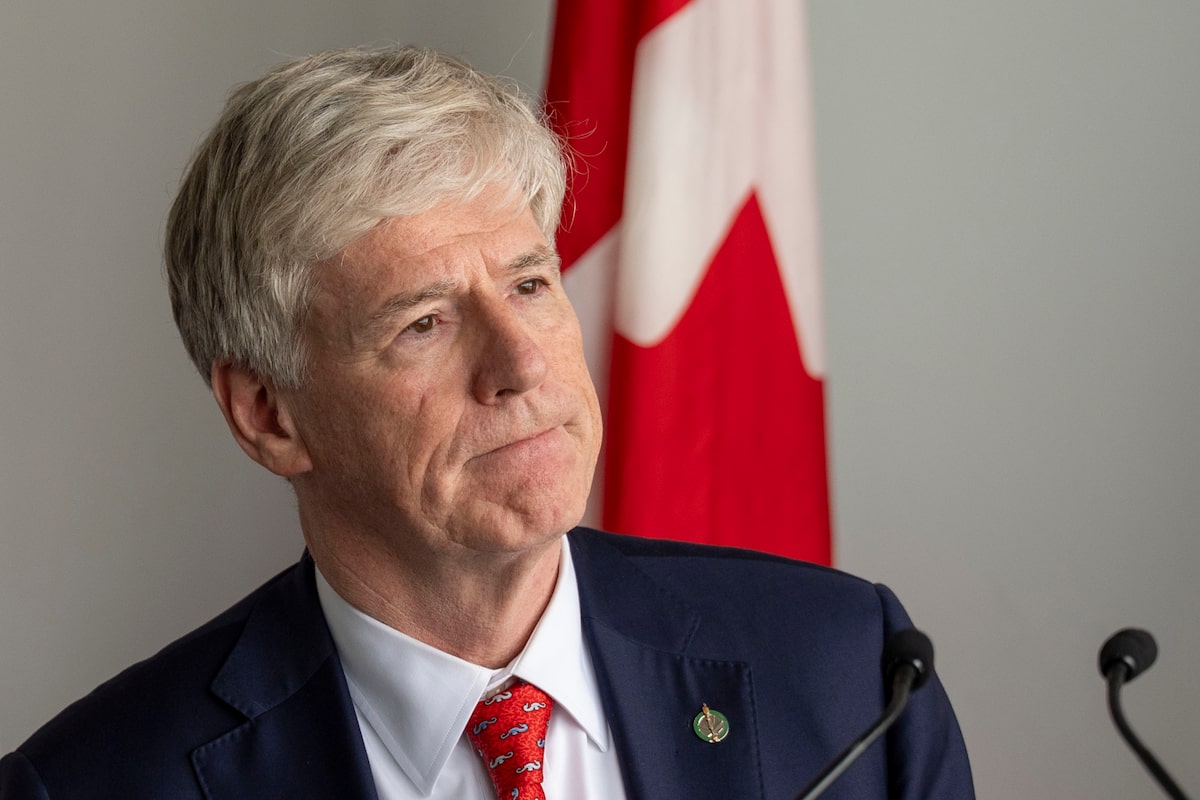Natural Resources Minister Tim Hodgson in Montreal in October. He says Ottawa will no longer announce several large projects on a single day with fanfare.Christinne Muschi/The Canadian Press
Ottawa is ending its practice of announcing several large industrial developments with fanfare on a single day, and now expects its Major Projects Office will take on individual proposals at a more gradual pace, Natural Resources Minister Tim Hodgson says.
Prime Minister Mark Carney on Thursday unveiled the second batch of mining, energy and infrastructure projects that will be fast-tracked for development, bringing the total number the new office is studying to 11.
“Now that the Major Projects Office is maturing, and now that the process is maturing, I think the likely outcome is we’ll let proponents bring projects forward and they’ll go in their normal course,” Mr. Hodgson said in an interview late Thursday.
“We won’t have to create an environment where we need to bring whole blocks of them at one time. My sense is we’ll start to see one every couple of months going forward.”
These are Carney’s new major projects, and some of them won’t be easy to finish
Carney’s major projects, mapped
The six announced on Thursday are the Ksi Lisims liquefied natural gas project and North Coast Transmission Line in Northwest British Columbia; Ontario’s Crawford nickel project; New Brunswick’s Sisson mine; Nouveau Monde Graphite’s Matawinie Mine in Quebec; and the Iqaluit Nukkiksautiit Hydro Project in Nunavut. They are at various stages of permitting and funding.
Mr. Hodgson spoke to The Globe and Mail from Timmins, Ont., not far from the site of the proposed US$2-billion Crawford Nickel Project, which is being developed by Canada Nickel Co.
The government created the MPO to streamline approvals and help access funding sources for projects deemed to be in the natural interest, as well as to determine what conditions might be required for a project to be exempted from various laws under the newly enacted and contentious Bill C-5, known as the Building Canada Act. None of the projects to date have yet to be designated in the national interest.
Mr. Hodgson said the role of the Calgary-based office, which is led by veteran energy executive Dawn Farrell, has not changed since it was established earlier this year as the centrepiece of the legislation.
It is aimed at bolstering domestic economic activity and security in response to U.S. President Donald Trump’s tariff war and shifting global trade ties, the government has said.
Mr. Carney set a target for the program to attract $500-billion in private capital over five years to create jobs as it seeks to redirect the economy from its reliance on the United States, Mr. Hodgson said. The first tranche of five projects, announced in September, “enables” $60-billion of investment, and the most recent about $56-billion, he said.
“With that as the end goal, the question is, how do we get there? And Dawn and the MPO are thinking hard about how we do that. We have two sorts of categories: We have discrete projects and strategies of national interest, and she is thinking about what’s the right mix,” he said.
The strategies bring together several projects in a region, such as the Northwest Critical Conservation Corridor, which was also discussed in the announcement on Thursday.
The corridor will be tied together by BC Hydro’s North Coast Transmission Line and encompass upgrades to highways and telecommunications. It is aimed at bringing power to communities in the region as well as to the Ksi Lisims LNG project, gas pipelines and critical-minerals mines. It is also being designed to include an environmental-protection element.
The government’s Canada Infrastructure Bank is lending BC Hydro $139.5-million for the transmission project.
“I think you’ll see less of those overarching strategies because within them are many, many projects and you’ll see more individual projects get announced going forward,” Mr. Hodgson said.
Carney’s Major Projects Office turns to banking, energy executives to fill its growing roster
The minister said the focus on designating critical-minerals developments as projects of national importance is aimed at breaking China’s stranglehold on the supply chains of many of those materials, including rare-earth minerals mining and processing.
Such materials targeted in the first two tranches of major projects include nickel, copper, graphite, tungsten and molybdenum, materials used in electric vehicles, batteries, renewable energy and steel alloys as well as defence applications.
At the recent G7 meeting in Toronto, he announced 26 new investments, partnerships and other measures aimed at critical-minerals development.
In last week’s federal budget, the Carney government announced a $2-billion critical-minerals sovereign fund in a push to finance mines and processing within Canada – both to feed domestic demand and to supply the United States.
The fund will bankroll loans, purchase equity stakes, and arrange price floors and supply agreements with mining companies.
